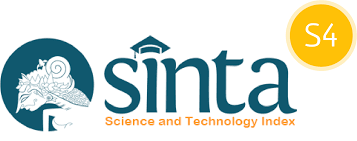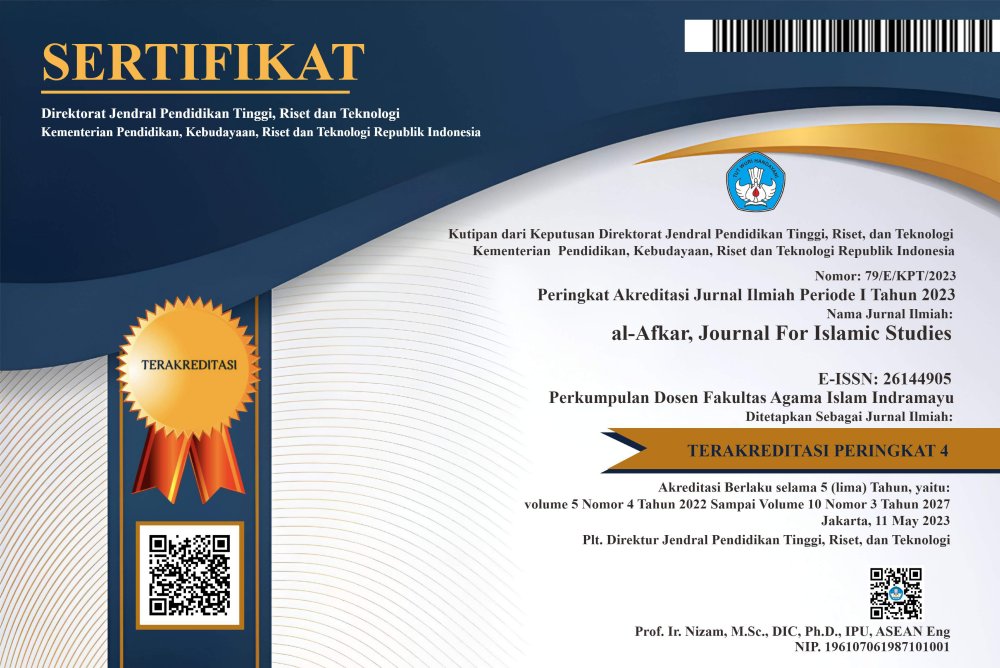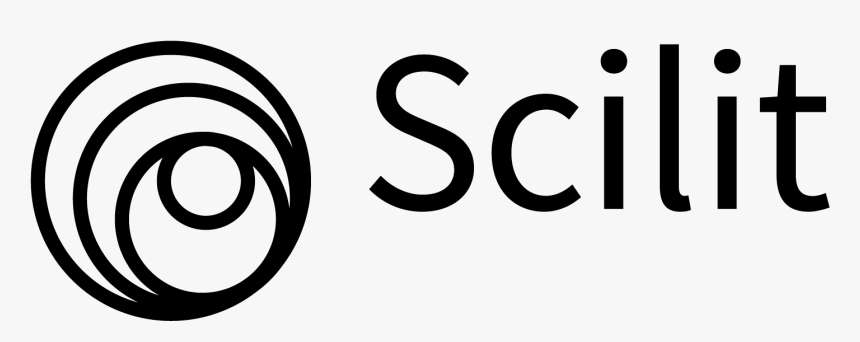Optimization of the Halal Fashion Industry Based on Islamic Boarding Schools in Tasikmalaya City
DOI:
https://doi.org/10.31943/afkarjournal.v7i3.1054Keywords:
Pentahelix, Islamic boarding school, halal fesyenAbstract
Tasikmalaya City is known as a center for embroidery industry which holds significant potential in the production of halal fashion industry. This potential is distributed throughout the city of Tasikmalaya with various motifs tailored to market demands. The halal fashion industry in Tasikmalaya operates at various scales, ranging from large textile factories to small-scale factories and home industries producing finished garments. Furthermore, the establishment of halal fashion industries based on pesantren (Islamic boarding schools) provides additional support, as the production process is often under the supervision of religious scholars, ensuring compliance with Islamic Sharia principles at every stage of production. This strengthens the aspect of product halal certification and maintains product quality in accordance with Islamic principles. To support the growth of this industry, there is a need for facilities that serve as production, promotion, and marketing hubs, especially for halal fashion industries, which have the potential to drive the local economy in the Tasikmalaya city area. This research becomes crucial when the management of the Tasikmalaya region is well-coordinated by the government with the support of private sectors, pesantren, and the community. Therefore, the author conducted a study aimed at analyzing the process of developing the potential of the halal fashion industry in Tasikmalaya City using the pentahelix model, employing qualitative research methods with a case study research approach. The results of this study indicate that the potential of the halal fashion industry in Tasikmalaya City can develop rapidly if all stakeholders collaborate synergistically, as reflected in the correlation among the elements in the pentahelix model.
Downloads
References
Annisa, A. A. (2019). Kopontren dan Ekosistem Halal Value Chain. Jurnal Ilmiah Ekonomi Islam, 5(01), 1. https://doi.org/10.29040/jiei.v5i01.398
BPS Kota Tasikmalaya. (2021). Jumlah Pondok Pesantren, Santri dan Ustadz MenurutKecamatan di Kota Tasikmalaya, 2020. Bps.Go.Id. https://tasikmalayakota.bps.go.id/statictable/2022/09/18/313/jumlah-pondok-pesantren-santri-dan-ustadz-menurut-kecamatan-di-kota-tasikmalaya-2020.html
Fadli, M. R. (2021). Memahami desain metode penelitian kualitatif. Humanika, 21(1), 33–54. https://doi.org/10.21831/hum.v21i1.38075
Fawa’id, M. W. (2022). Pesantren dan Ekosistem Halal Value Chain. 4(2), 166–184.
Herman, S., Studi, P., Mesin, T., Mesin, J. T., Teknik, F., Sriwijaya, U., Saputra, R. A., IRLANE MAIA DE OLIVEIRA, Rahmat, A. Y., Syahbanu, I., Rudiyansyah, R., Sri Aprilia and Nasrul Arahman, Aprilia, S., Rosnelly, C. M., Ramadhani, S., Novarina, L., Arahman, N., Aprilia, S., Maimun, T., … Jihannisa, R. (2019). Wira Usaha Baru. Jurusan Teknik Kimia USU, 3(1), 18–23.
Isnaeni, N., & Lubis, P. (2022). Najaha Iqtishod Journal of Islamic Economic and Finance Analisis Potensi Pengembangan Produk Fesyen Muslim dalam Upaya Mendukung Industri Halal Fesyen Usi Modist Jambi. 3(3), 168–177.
KEMENAG. (2023). Inkubasi bisnis (p. 2023).
kemenperin. (2021). Kemenperin Fokus Penguatan Mitra dan Program e-Smart IKM. Kemenperin.Go.Id. https://kemenperin.go.id/artikel/23066/Kemenperin-Fokus-Penguatan-Mitra-dan-Program-e-Smart-IKM-
kemenprin. (2022). Kemenperin Targetkan Industri Fesyen Muslim Indonesia Jadi Pemain Global. Kemenperin.Go.Id. http://ikft.kemenperin.go.id/kemenperin-targetkan-industri-fesyen-muslim-indonesia-jadi-pemain-global/
kneks. (2020). Upaya Menjadikan Indonesia Kiblat Fesyen Muslim. Kneks.Go.Id. https://kneks.go.id/berita/322/upaya-menjadikan-indonesia-kiblat-fesyen-muslim?category=1
Kompasiana. (2023). Trend Fashion Halal di Indonesia. Kompasiana.Com. https://thr.kompasiana.com/muhammadarif4536/643100fd4addee40b56b93d2/trend-fashion-halal-di-indonesia-jangan-bilang-kamu-baru-tahu?page=all
Lexy. J. Moleong. (2021). Metodologi Penelitian Kualitatif. PT Remaja Posdayakarya.
Muflihin Dliyaul. (2019). Indikator Halal Dalam Industri Halal Fashion. Jurnal Saujana, 01, 53–69.
Nuraeni, Y., Yuliastuti, A., Nasution, F. A., Saepul Muharam, A., & Iqbal, F. (2022). Peran Balai Latihan Kerja (BLK) Komunitas Dalam Menyediakan Tenaga Kerja Pada Dunia Usaha dan Industri. Jurnal Ketenagakerjaan, 17(1). https://doi.org/10.47198/naker.v17i1.124
Nurmalia, A. (2014). Strategi Pengembangan Usaha Mikro, Kecil, Dan Menengah (Umkm) Dengan Model Penta Helix. Paper Knowledge. Toward a Media History of Documents, 83–125.
PERGUB Jawa Barat. (2019). Peraturan Gubernur Jawa Barat Nomor 24 Tahun 2019 tentang Penyelenggaraan One Pesantren One Product.
Salsa Nurnajmi Laila. (2022). Industri Pakaian dan Fashion di Indonesia. Kumparan.Com. https://kumparan.com/salsanurnajmi14/industri-pakaian-dan-fashion-di-indonesia-1zPlgWD84PX/2
Suwanto, S., & Gunawan, I. (2021). Ekosistem Pesantren dalam Mewujudkan Manajemen Halal Supply Chain Menuju Madani Society 5.0. Mabny : Journal of Sharia Management and Business, 1(02), 116–128. https://doi.org/10.19105/mabny.v1i02.5198
UI. (2023). Universitas Indonesia Halal Center (UIHC). Ui.Ac.Id. https://dppu.ui.ac.id/uihc/
Wulansari, W., Fauziyah, D., Hidayat, T., Ramasiah, S., Prehanto, A., & Nuryadin, A. (2022). Perkembangan Industri Kreatif Di Kota Tasikmalaya Pada Era Digital. Jurnal Industri Kreatif Dan Kewirausahaan, 5(2), 122–129. https://doi.org/10.36441/kewirausahaan.v5i2.1313
Downloads
Published
How to Cite
Issue
Section
License
Copyright (c) 2024 Danial Kusumah, Irwan Fauzy Ridwan

This work is licensed under a Creative Commons Attribution 4.0 International License.



















